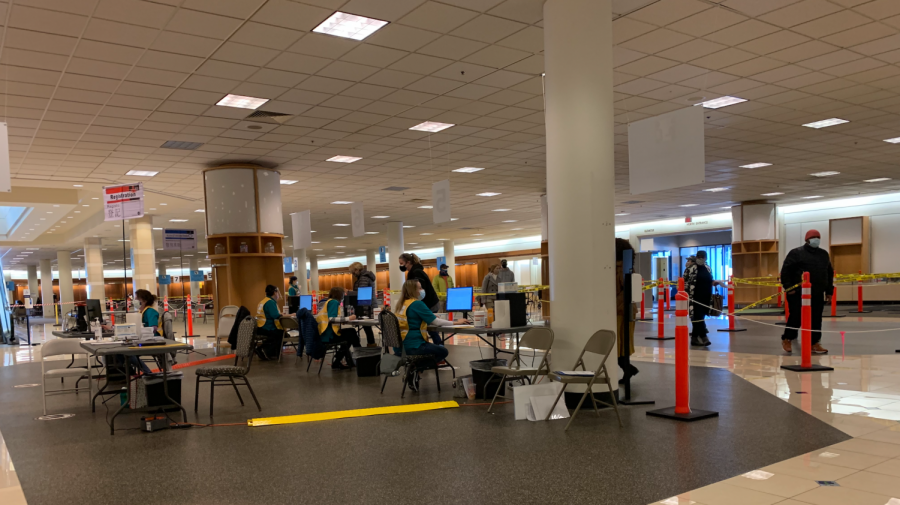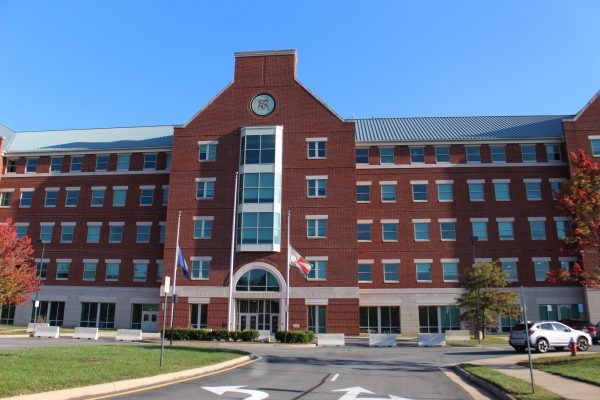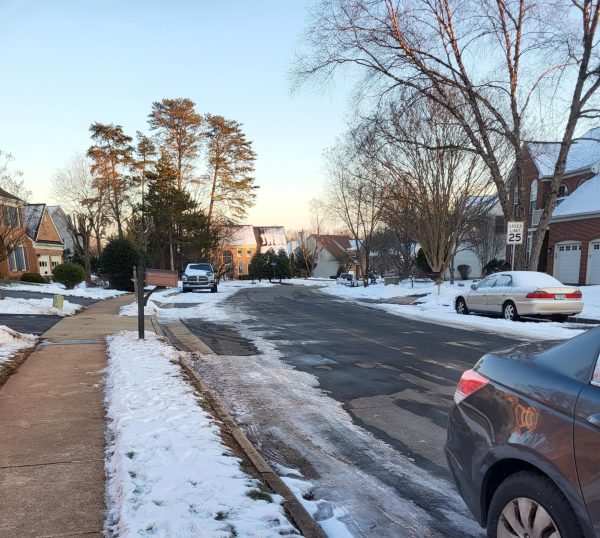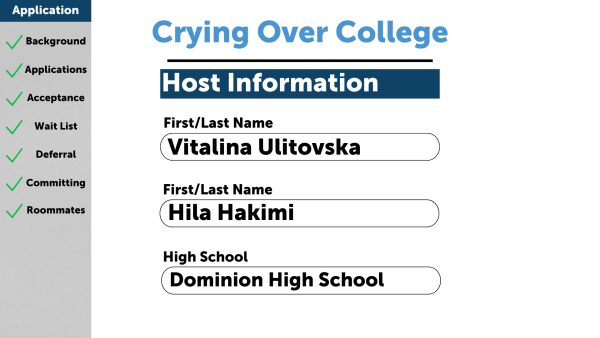Loudoun County Pushes Ahead with COVID Vaccinations
The Dulles Mall serves as a county vaccination POD.
As Loudoun County continues to expand preparations and realistically execute the tremendous task of Coronavirus vaccination, several points of distribution, or PODs, have been set up since late January in an effort to begin this process and maximize efficiency through winter and into the spring.
As of right now, these centers are currently servicing two phases of the vaccination process: recognized as 1a and 1b. Phase 1a focuses on people of the highest risk, which translates to health care workers and long-term care facility residents. Phase 1b consists of first responders, teachers, and those who are considered frontline essential workers. This category also includes people aged 65 and older, as well as people aged 16-64 with a high-risk medical condition or disability; for those who would otherwise experience increased risk of severe illness from COVID-19.
In order to service the above phases, Loudoun County’s Health Department, Fire Department, and Loudoun County Public Schools had established their own separately-functioning PODs by late January. While Brambleton Middle’s established POD was designated especially to process the county’s teachers and educational staff, the Fire Department’s POD in the vacated Nordstrom building at Dulles Town Center was built to provide vaccinations for their 1b servicemen and volunteers.
In order to make it in their arms, the vaccine supply must first make its way through the bureaucracy of national, state, and local government. “The supply that comes in the distribution model is centralized nationally: vaccine gets distributed out primarily to state health departments, and then from there, it gets earmarked for different localities,” detailed Dr. John Morgan, Medical Director of Loudoun County’s Fire and Rescue system.
Although this system is evidently complicated, and the vaccine supply isn’t endless, the long game is necessary to ensure the capability of each county to provide a vaccine for each of its eligible citizens. For example, as explained by Michael Lamb, Battalion Chief at Loudoun County Fire Department, the standard allotment allocated to Loudoun County is determined by its population and averages around 4,800 doses per week as of February 8.
Within this first week of operation, from January 22 to January 28, they averaged a pace of 30 to 40 people vaccinated per hour while effectively taking on overflow, including the higher risk 65+ category, of the Health Department’s POD at INOVA Loudoun Hospital. In addition, while installing necessary infrastructural changes to the building, they were able to “actively transition from the moderna vaccine to the Pfizer vaccine, because now they [had] a super cold freezer,” as further described by Dr. Morgan.
“It’s this constant state of flux that we have to react to. The good thing about us is, that’s what we do best. We respond to crises of all sorts, we call ourselves an all hazards agency…it doesn’t matter if it’s a hazmat spill, a bus crash, or a whole bunch of people who need calls all at once—we’re able to react, so it suits us well in that nature to be problem solvers, find solutions, be collaborative, and work with other agencies,” he elaborated.
In recent weeks, the efficiency rate and coordination has vastly improved on a grand scale as the Health Department and Fire Department integrated under Nordstrom’s roof. Their updated infrastructure and organization, including clearly marked pathways and a rainbow of color-coded personnel, has allowed for a smooth transition and quick processing times.
In fact, Lamb reports, their most recent statistics place them at approximately 1,200 shots per day at this facility—double the quantity of their initial efforts with 600 shots a day before the integration. At maximum capacity, he noted, the POD could support up to 24,000 shots a day when all 100 stations are staffed, equipped, and of course, if enough vaccines are available.
For those who have concerns about the vaccine’s safety, Dr. Morgan explained, “We’ve given these vaccines to millions and millions of people around the world. And so if there were problems, they’d be in the media.”
The adverse reaction rate they’ve observed is less than 2% after the first shot, with a normal range of symptoms ranging from soreness at the injection site to mild flu-like symptoms. However, after the second shot, there is a slightly increased potential for an adverse reaction due to the body’s immune response as it develops antibodies against the virus.
“I look at this vaccine as kind of like our 1960s ‘put a man on the moon’ moment as a society, ” said Dr. Morgan. “We should support [the effort], this is what good societies do.”
Although the county has much to be grateful for and much to hope for in the future, the reality of this timeline must always be at the back of one’s mind as the world gradually begins to open up. Although the vaccine distribution and efficiency has increased greatly in the past two months, Loudoun County’s positivity rate is still considered “extremely high”—with more than 640 per 100,000 cases amongst other problems—despite how the quantity of hospitalizations and recorded cases themselves have otherwise decreased in the past two weeks, according to the New York Times.
“At our current supply rate, it will take months—at least until March or April—for Virginia to meet the demand for Phase 1b vaccinations,” an official on Loudoun County’s official website clarified because, until then, the mitigation strategies of everyday life are exceedingly important to keep everyone else safe.
For more specific information on Loudoun County’s vaccination process, these websites are extremely informative on all matters relating to the Coronavirus response and vaccine eligibility: https://www.loudoun.gov/5307/Coronavirus
https://www.loudoun.gov/Blog.aspx?IID=553
https://www.vdh.virginia.gov/covid-19-vaccine/
https://www.nytimes.com/interactive/2021/us/loudoun-virginia-covid-cases.html

Neena Peterson, the Co-Editor-in-Chief, is a four year reporter for DHS Press, first writing for the newspaper in 2018. They prefer to focus on pieces...












Sharon Heiss • Mar 5, 2021 at 3:30 am
I have acquaintances from both DC & MD who got both of their shots at Nordstrom’s about a month ago. They told me that they knew someone who knew someone.
Anyone know why Loudon County ion VA is vaccinating other Metro area people when thousands of us all over Northern VA have been and are still waiting for our shots?